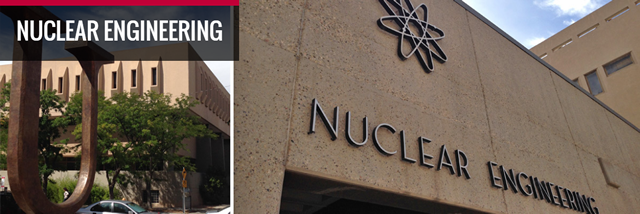
Nuclear Engineering ETDs
Publication Date
1-28-2015
Abstract
For this work a methodology has been developed to predict the sensitivity of a beryllium/scintillator fusion neutron detector. Neutrons may be captured by the beryllium via the 9Be (n, α) 6He nuclear reaction, where the product nucleus, 6He, decays by beta emission. The beta particles can be detected by close coupling scintillator with the beryllium. The methodology relates beta energy deposition to absolute measured scintillation light output as a function of detector bias, reflective material, scintillator thickness, and solid angle subtended by the scintillator on the face of the PMT. Output signals were measured from thin plastic scintillator using NIST traceable beta and gamma sources and MCNP5 was used to model the energy deposition from each source. Combining the experimental and calculated results gives the desired empirical relationships. The results from this methodology were compared with previous work and the two results were in good agreement. The empirical relationships were applied to a similar detector with much larger dimensions and very different response characteristics. The correlation between the two systems produced nearly identical results. To validate, the sensitivity of the second beryllium/scintillator-layer neutron activation detector was predicted and then exposed to a known DD neutron fluence. The neutron fluence was determined by the associated particle method from which the detector sensitivity could be inferred. The predicted and the measured sensitivity agreed within a range of 8 to 38 percent difference with an average standard deviation of 25% from 8 total measurements. Predicting the detector performance within 25% is adequate enough to guide future detector design decisions. To test this methodology it was applied to the design modeled after Sandia National Laboratories current beryllium detector, which was originally designed using results from a very limited set of experimental data. The results of these calculations indicated that the design was in fact optimal within the uncertainties of this work.
Keywords
Beryllium, Activation, Plastic Scintillator, Response Function, Neutron Detector
Sponsors
Sandia National Laboratories
Document Type
Thesis
Language
English
Degree Name
Nuclear Engineering
Level of Degree
Masters
Department Name
Nuclear Engineering
First Committee Member (Chair)
Hecht, Adam
Second Committee Member
Ruiz, Carlos
Recommended Citation
Styron, Jedediah. "PREDICTING THE SENSITIVITY OF A BERYLLIUM/SCINTILLATOR FUSION NEUTRON DETECTOR COMBINING EXPERIMENTAL METHODS AND MONTE CARLO MODELS." (2015). https://digitalrepository.unm.edu/ne_etds/41


